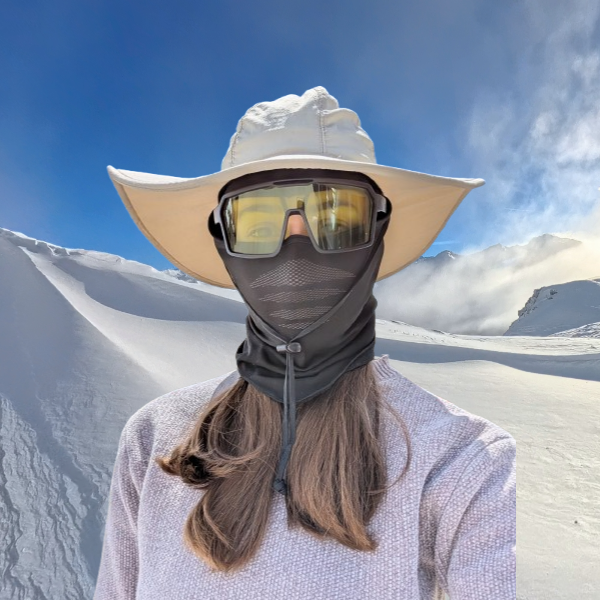The Truth About Mountain Sun
You can have the most diligent, expensive skincare routine, but if you spend time in the mountains, it's likely failing.
The "mountain sun" is not the same as the sun at sea level. At high elevation, the atmosphere is thinner, filtering less UV radiation. This radiation is the primary driver of photo-aging, sun spots, and long-term skin damage.
Worse, at altitude, light doesn't just hit you from above. It radiates from below, reflecting off snow, rock, and even grass. This means you are getting a double dose of UV, hitting sensitive areas like the jawline, under the nose, and ears.
The Problem with Sunscreen
For decades, sunscreen was the only fix. But there are two critical problems with relying on it for high-output mountain life.
- The Efficacy Failure: Sunscreen is not a "set it and forget it" solution. Chemical sunscreens break down under intense UV exposure, especially with sweat. Even "cleaner" mineral sunscreens, like zinc and titanium oxide, are not foolproof. They wear off after a few hours from skin friction, moisture, and movement. Reapplying on a windy, exposed ridge is impractical. We've all skipped it and paid the price. This is not a reliable anti-aging strategy.
- The Health Concern: Beyond efficacy, there are questions about what we are absorbing. Many chemical sunscreens contain ingredients linked to skin irritation or hormone disruption. Studies have shown that some of these chemical filters are absorbed into the bloodstream, where they can linger for weeks. While the long-term health implications are still being studied, the most reliable protection is one that doesn't need to be absorbed.
Why Most Face Coverings Fail
The evidence is clear: a physical barrier is the only option that truly holds up. It doesn't fade, wash off, or need reapplication.
But most physical barriers aren't built for endurance. We’ve tried them. Neck gaiters get wet from breath, cling to your face, and then freeze. Moisture builds up inside, making them hot, wet, and suffocating. They offer inconsistent coverage, and most won't stay in place under a helmet or in an alpine gust.
A System for True Skin Health
A true solution must be designed for this specific environment. We are designing a new protection system built to solve these exact failures. Our solution is focused on four key areas:
- Moisture Management: Creates physical space between the fabric and the face to manage moisture from breath.
- Total Breathability: Features high-performance fabrics that balance UV-blocking with high-output breathability.
- Stability: A stable structure that stays in place under a helmet, even in high wind.
- Full Coverage: Provides complete protection for the under-jaw and ears from all angles, without overheating.
This isn't just about comfort. It's about long-term skin health. The best protection isn't a cream you reapply. It's something you wear and forget is even there.
